PCIe SSD Faceoff: Samsung XP941 (128GB & 256GB) and OCZ RevoDrive 350 (480GB) Tested
by Kristian Vättö on September 5, 2014 3:00 PM ESTRandom Read/Write Speed
The four corners of SSD performance are as follows: random read, random write, sequential read and sequential write speed. Random accesses are generally small in size, while sequential accesses tend to be larger and thus we have the four Iometer tests we use in all of our reviews.
Our first test writes 4KB in a completely random pattern over an 8GB space of the drive to simulate the sort of random access that you'd see on an OS drive (even this is more stressful than a normal desktop user would see). We perform three concurrent IOs and run the test for 3 minutes. The results reported are in average MB/s over the entire time.

Random read performance remains unchanged for the XP941 despite the lower capacity, while the RevoDrive does not really enjoy any performance increase over other SandForce based SSDs.
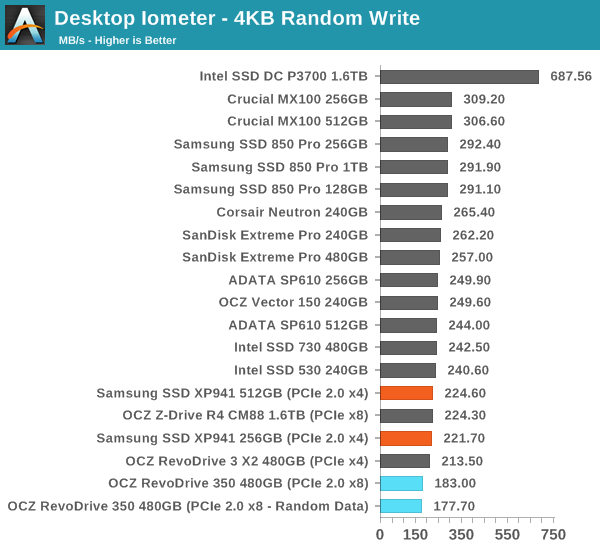
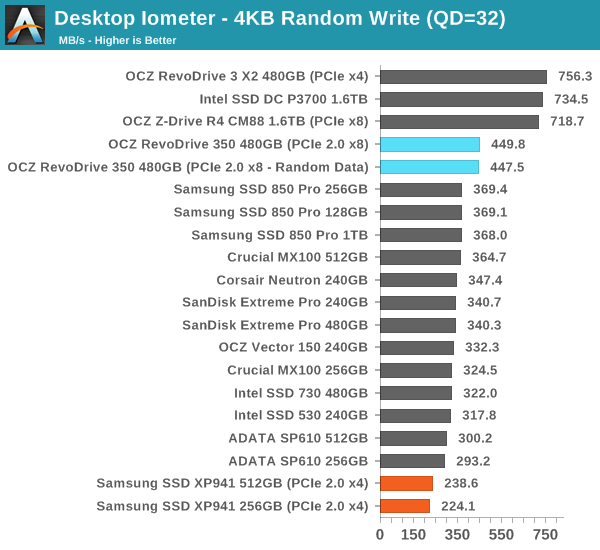
As for random write, the 256GB XP941 appears to be almost a match for the 512GB. The RevoDrive is a fairly interesting case because at low queue depths its performance is pretty bad, but the performance scales with the queue depth. Again, RAID only helps when there are multiple IOs in parallel, which only happens at high queue depths. At low queue depths RAID only seems to cause overhead, which would explain the low performance.
Sequential Read/Write Speed
To measure sequential performance we run a 1 minute long 128KB sequential test over the entire span of the drive at a queue depth of 1. The results reported are in average MB/s over the entire test length.
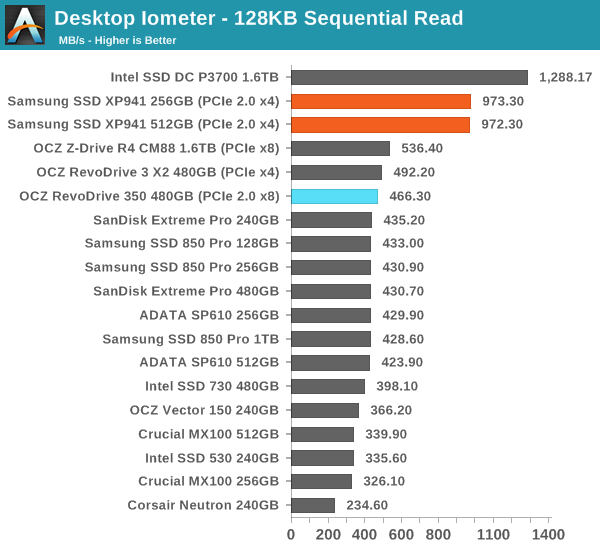
The XP941 continues to be strong, but the RevoDrive still does not offer much benefit over a SATA drive. We are dealing with a QD1 situation here so the RevoDrive cannot really take advantage of its internal parallelism.
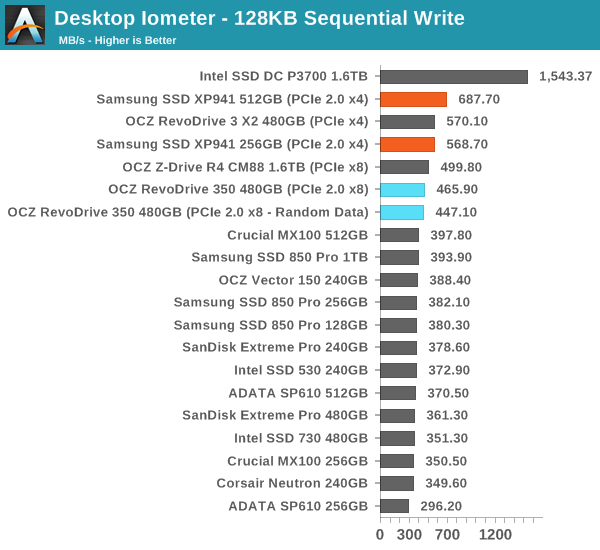
AS-SSD Incompressible Sequential Read/Write Performance
The AS-SSD sequential benchmark uses incompressible data for all of its transfers. The result is a pretty big reduction in sequential write speed on SandForce based controllers, but most other controllers are unaffected.

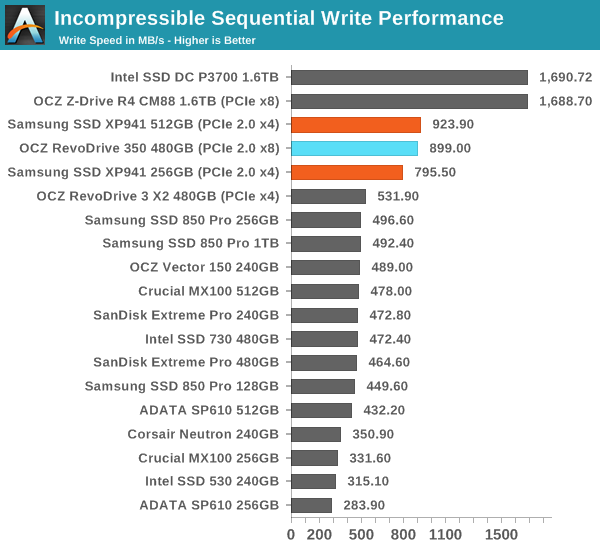










47 Comments
View All Comments
xrror - Monday, September 8, 2014 - link
Not sure if this is technically possible, but I see a killer niche product of making a "generic bootable" NVMe PCIe card that presents whatever BIOS and/or uEFI code needed to bootstrap legacy systems with any M.2 or (possibly?) ajoining PCIe SSD of your choice?M.2 is obvious, just snap it onto the PCIe card.
I know in the old PCI days, some SCSI cards could boot ajoining cards for you also (Adaptec, LSI) but I was never sure that had to be vendor specific or not (probably).
Again it probably would take so much effort and be a compatibility hell, but I dunno, it would be nice.
Or we could get lucky, and bootable PCIe SSD's just take off as a common thing, so older systems can get into the game. Maybe...
GrigioR - Tuesday, September 9, 2014 - link
Yep, If they can make PCIe x4 or x8 cards that will translate into about 1000MB/s or 2000MB/s using PCIe 1.0/1.1 (bus speed). If you have some old board that have a second x4/x8 slot you could add one of these little things and still have a really fast system. Many good old boards have them and had support for 8GB DDR2 and quad core CPU's. So... you could still have a really fast system out of and old platform. (Phenon x4/Core2Quad/Modded Xeons).mohsin1994 - Monday, September 8, 2014 - link
very nice post :))www.gadgetsalert.com
Pwnstar - Monday, September 8, 2014 - link
Nice spam!MarcHFR - Thursday, September 11, 2014 - link
Hi,For secure erasing PCIe drive, what software did you use ? Thanks
dxv99p - Monday, January 12, 2015 - link
Today my XP941 256GB also died. I have not used any erase-tools. It died while PC was running idle with a bluescreen. My board is an ASRock z97 Extreme6. First I thought about the board or the power-supply but a test in another system confirmed it has gone after only 5 month in 24/7 running. Ambient temperatur is controlled at about 30°C so this is not the problem.andrewk18 - Monday, January 9, 2017 - link
Is there anyway to get the ocz revodrive 350 to work on mac pro 5,1?